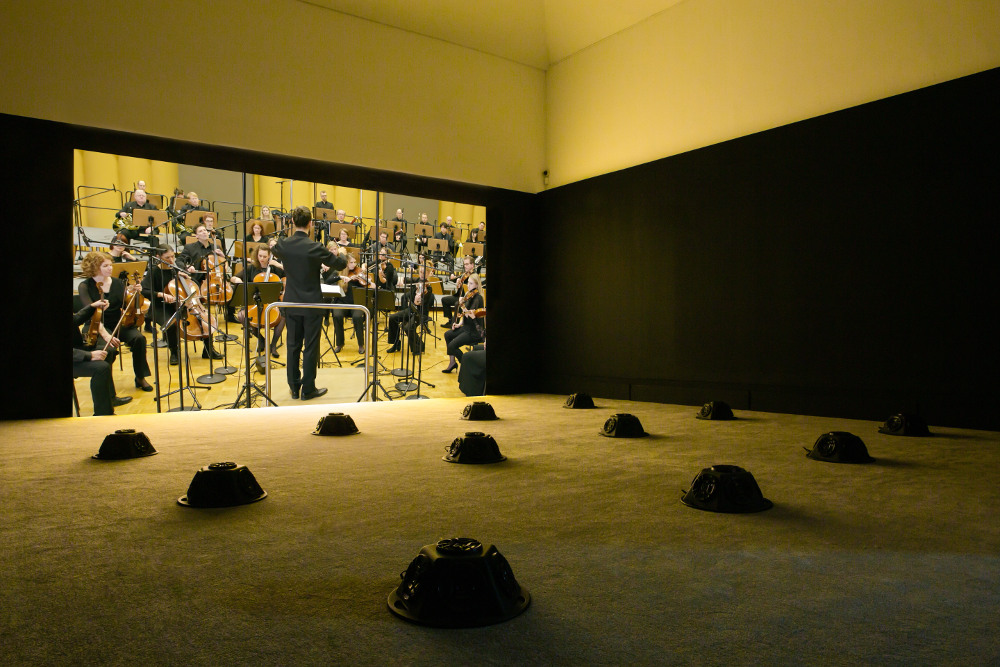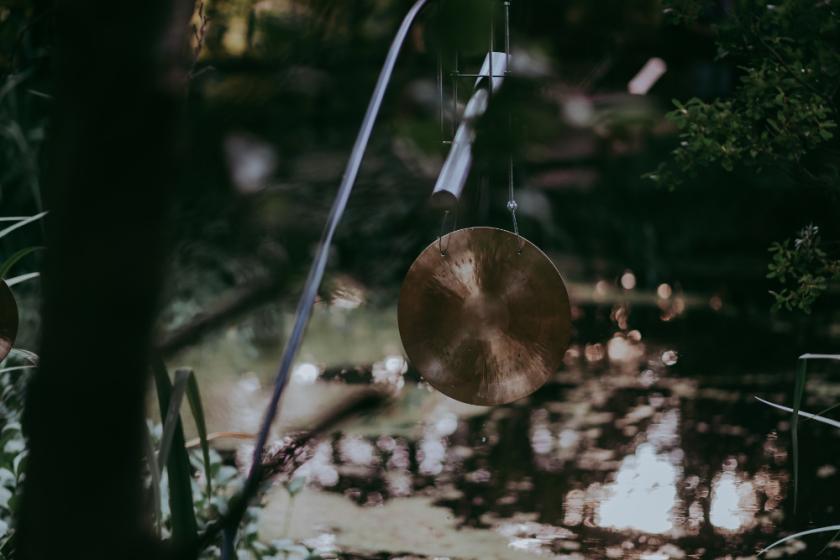Below the Blanket ★★★★
There’s a deep vein of melancholy running through Glasgow producing house Cryptic’s promenade installation Below the Blanket, which currently occupies several sites across Edinburgh’s Royal Botanic Garden. Bringing together the work of a clutch of artists, and blurring boundaries between the sonic and the visual (a fertile hinterland that Cryptic has made very much its own), Below the Blanket is inspired by northern Scotland’s Flow Country, a spellbinding and little-known landscape stretching across Caithness and Sutherland. Not only a vital environment for plants, insects and animals, it’s also one of Europe’s most important natural carbon stores.
Hence the melancholy. There’s the feeling lurking behind these often quite magical pieces that this is a frighteningly fragile world, one that could easily slide into disappearance with the gentlest fluctuations in climate. And it’s that very fragility that some of Below the Blanket’s artists seem to have responded to most strongly.
Caithness composer Malcolm Lindsay’s musical commission is a case in point. Entitled simply Flow Country, it’s broadcast from tree-embedded loudspeakers, and performed live on Fridays by a quartet of singers from Scotland’s Dunedin Consort. Using austere modal harmonies and striking dissonances, Lindsay slowly lists the Latin names of Flow Country plants and animals in what feels like an attempt at preservation. It’s captivating music that can stop you in your tracks, as strange and beautiful as the place that inspired it, but there’s a lament-like poignancy to it too.
Luci Holland’s Hold occupies a path crossing the Botanic Garden’s famous beech hedge, and addresses humankind’s impacts on the natural world head-on with sonic effects that slide downwards as visitors walk by, almost sighs of resignation. Even in the show’s most colourful moment – Heather Lander’s exquisite, perspex-layered Do Not Disturb II: The Permanence of Fragility – there’s a touching fragility to her flamboyant miniature drawings of plant- and flower-like patterns.
Strongest of all are the works by Kathy Hinde, a regular Cryptic collaborator, which blend sound and vision so that you can hardly see the joins. Water-filled tubes set hanging gongs gently chiming in her Water Balance, while a flock of accordion bellows wheeze messages from their precarious perches in a tree in her Chirp & Drift. But her closing coup de théâtre – to say more would spoil the show’s beguiling final surprise – seems troubled in its use of recorded birdsong. Is this all we’ll be left with?
Below the Blanket is a beautifully paced, thoughtful show, one whose location within the natural environment is key to its impact – though it’s hard not to be aware of the striking contrasts between the lush, cultivated beds of the Botanic Garden and the sparse wilderness of the landscape being celebrated. It’s an experience that demands and rewards slow, careful attention, but one whose exquisite invention seems shot through with sadness all the same.
- Below the Blanket at the Royal Botanic Garden Edinburgh until 25 August

Samson Young: Real Music ★★★
Over at the Talbot Rice Gallery, as part of the Edinburgh Art Festival, there’s more melding of music and visuals from Hong Kong-based Samson Young, this time in works that bring musical issues squarely into the art gallery.
That meeting of disciplines is most obvious in his Muted Situations #22: Muted Tchaikovsky’s Fifth, a witty and surprisingly compelling installation showing Cologne’s Flore Symphony Orchestra play through Tchaikovsky’s Fifth Symphony with entirely muted instruments, so that all we hear is the scrape of bows, the rattle of keys, the thump of dampened timpani. But with its plastic wrapped around string bridges and numerous other interventions, is Young’s orchestra really simply muted, or instead "prepared" to produce noises it would never otherwise emit?
In the next room, a giant brass instrument seems about to emerge from the floor in Possible Music #2, while a curl of loudspeakers emit sonic signals from impossible instruments – apparently piccolo tubas or growling subsonic trumpets, their sounds manipulated (with the help of Edinburgh University’s Next Generation Sound Synthesis research group) according to heat, size and any number of other factors.
Most fascinating – but most didactic, too – is Young’s third installation, the two-sided video work The World Falls Apart into Facts. On one side, he presents a performance lecture on "echoic mimicry", the process whereby a cultural artifact (a Chinese folksong, say) is exported to another culture, altered, then reimported as if it were authentic. On the other is Young’s own outlandish reinterpretation of "traditional" Japanese Togaku music – apparently imported from China centuries ago – and reimagined for a bizarre ensemble of musicians dressed as fruit and vegetables and a bell-bedecked horse wandering around the group. It raises a smile, certainly as a particularly extreme example of the issues Young discusses in his lecture, but it’s questionable why this isn’t simply a journal article or symposium paper. There’s plenty to chew on here, certainly, but under scrutiny, cracks begin to appear.
- Samson Young: Real Music at the Talbot Rice Gallery until 5 October










![SEX MONEY RACE RELIGION [2016] by Gilbert and George. Installation shot of Gilbert & George 21ST CENTURY PICTURES Hayward Gallery](/sites/default/files/styles/thumbnail_125_x_125_/public/mastimages/Gilbert%20%26%20George_%2021ST%20CENTURY%20PICTURES.%20SEX%20MONEY%20RACE%20RELIGION%20%5B2016%5D.%20Photo_%20Mark%20Blower.%20Courtesy%20of%20the%20Gilbert%20%26%20George%20and%20the%20Hayward%20Gallery._0.jpg?itok=3oW-Y84i)




Add comment